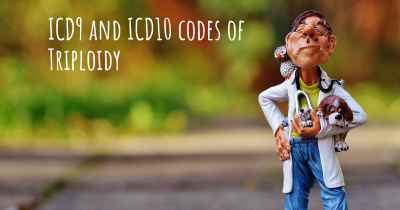What is the history of Triploidy?
When was Triploidy discovered? What is the story of this discovery? Was it coincidence or not?

Triploidy: A Brief History
Triploidy is a genetic condition characterized by the presence of an extra set of chromosomes in an individual's cells, resulting in a total of 69 chromosomes instead of the usual 46. This condition can occur in humans as well as in various plant and animal species. The history of triploidy research and understanding dates back several decades, with significant advancements made in the field of genetics.
Early Discoveries
The first documented case of triploidy in humans was reported in 1922 by the German geneticist Marthe Gautier. She described a stillborn baby with 69 chromosomes, which sparked interest in understanding the genetic basis of this condition. However, it wasn't until the 1950s that researchers began to delve deeper into the study of triploidy.
Chromosome Analysis
Advancements in chromosome analysis techniques, such as karyotyping, played a crucial role in the identification and diagnosis of triploidy. Karyotyping involves examining an individual's chromosomes under a microscope to determine their number and structure. In the 1960s and 1970s, researchers started using karyotyping to identify triploidy in both live-born individuals and miscarried fetuses.
Understanding the Causes
As researchers gained a better understanding of triploidy, they began investigating its causes. It was discovered that triploidy can arise through various mechanisms, including errors during fertilization, abnormal cell division, or the fusion of two sperm with a single egg. These mechanisms result in the presence of an extra set of chromosomes in the individual's cells.
Medical Implications
The identification of triploidy in humans has had significant medical implications. Triploidy is often associated with severe developmental abnormalities and is a common cause of miscarriages and stillbirths. Understanding the genetic basis of triploidy has helped healthcare professionals provide appropriate counseling and support to affected families.
Advancements in Genetic Testing
Over the years, advancements in genetic testing techniques have further enhanced our understanding of triploidy. Fluorescence in situ hybridization (FISH) and more recently, chromosomal microarray analysis (CMA), have allowed for more precise identification and characterization of triploidy cases. These techniques enable researchers to study the specific chromosomal abnormalities associated with triploidy and their impact on an individual's health.
Research and Treatment
Research on triploidy continues to expand our knowledge of this condition. Scientists are investigating the underlying genetic mechanisms that lead to triploidy and exploring potential therapeutic interventions. Additionally, advancements in assisted reproductive technologies have allowed for preimplantation genetic testing, which can help identify triploidy in embryos before implantation, reducing the risk of affected pregnancies.
Conclusion
The history of triploidy research spans several decades, with significant progress made in understanding its causes, diagnosis, and medical implications. The development of chromosome analysis techniques, advancements in genetic testing, and ongoing research efforts have contributed to our current understanding of triploidy. This knowledge has not only improved diagnostic capabilities but also provided valuable insights into the genetic basis of developmental abnormalities. Continued research in this field holds promise for further advancements in the diagnosis, treatment, and prevention of triploidy.








